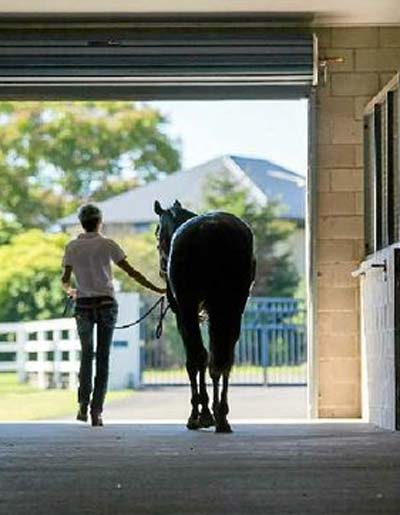
|
You may have participated in the 2012/2013 survey conducted by the Australian Horse Industry Council - it was the first national Horse Health and Wellbeing survey for Australia.
The survey looked at horsekeeping practices in Australia including shelter, social contact, exercise, watering and feeding. The results of the research, undertaken by KR Thompson, L Clarkson, CB Riley and M van den Berg. has recently been published in the Australian Veterinary Journal (Nov 2017). |
|
Over the last two centuries Australia has adopted similar horse management practices to those in Europe even though our climate and landscape differ significantly from the northern hemisphere, and although surveys about general horse management have been undertaken around the world none had been done in Australia.
An extension of times when working horses were kept in peri-urban environments to facilitate ease of access to their local work area, modern horse keeping also means that horses are often unable to engage in natural behaviours such as foraging or choosing when and where to exercise and are reliant in varying degrees on their human handlers for feed, shelter, water and exercise.
The way we keep horses in Australia has a direct and significant effect on their welfare and this study can provide important insights into the health and welfare of individual horses for vets, trainers, owners, students and welfare agencies.
The study found a majority (83%) of horses were managed at pasture with under 50% being kept with one or more equine companions. Just over one-quarter of pastured horses were kept alone (26%) while a further 27% had one companion animal (non-equine).
If horses were stabled or kept in a small yard, riding was the most common form of exercise (65%) with daily exercise occurring for 60%. Other forms of exercise included lunging and leading.
The study highlights several areas of concern including social and physical isolation: around one quarter of stabled horses were prevented from unmediated social and physical contact with other horses; this figure was reflected in pastured horses of whom around 26% were kept alone, although it is unclear whether pastured animals had horses on boundary fences / neighbouring properties.
A further area of concern is the 20% of stabled horses that are being exercised less than daily.
Owners from around Australia took part in the survey and four breeds made up just over half (55%) of the horses represented in the survey: Thoroughbred, Australian Stock Horse, Quarter Horse and Warmblood. Other breeds represented included American Saddlebred, Andalusian, Anglo Arab, Australian Brumby, Australian Pony, Australian Riding Pony, Australian Spotted Pony, Cleveland Bay, Fjord, Friesian, Gypsy, Hanovarian, Holsteiner, Icelandic Horse, Irish Sport Horse, Jeparit Pony, Miniature, Morgan, Oldenburg, Paint, Quarter Pony, Riding Pony, Shetland, Shire, Suffolk Punch and Waler breeds.
The article is available to Australian Veterinary Journal subscribers and Equine students or can be downloaded for a fee from Wiley Online Library.
SOURCE: Australian Horse Industry Council